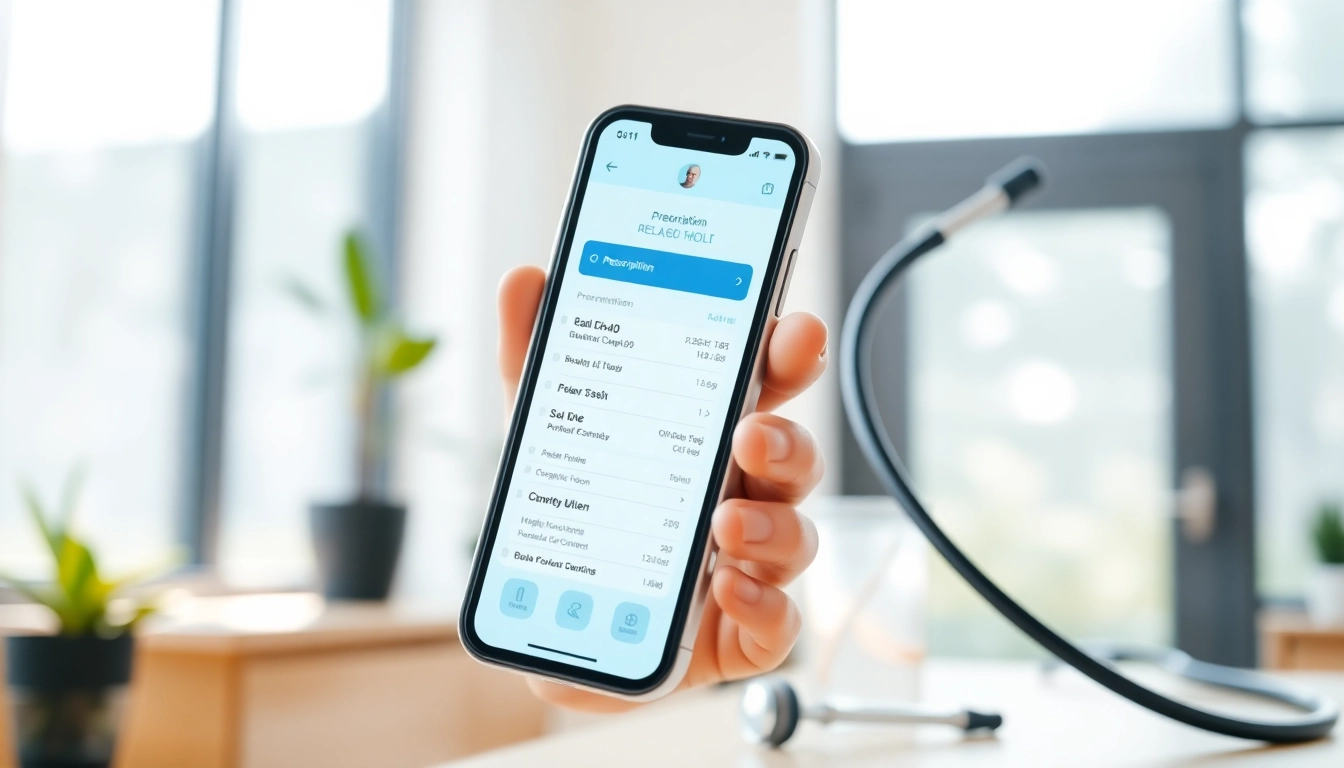Maximizing Efficiency: The Key Advantages of Using Eprescription Apps
Understanding Eprescription Apps
What Are Eprescription Apps?
Eprescription apps are digital tools designed to streamline the prescription process for healthcare providers and patients alike. These applications enable healthcare professionals to send prescriptions electronically to pharmacies, replacing traditional paper prescriptions. This tech-driven approach to prescribing enhances efficiency, reduces human error, and fosters a better relationship between patients and healthcare providers. The essence of these apps lies not only in facilitating the prescription itself but also in providing a comprehensive platform that manages various aspects of patient medication adherence, information access, and data tracking.
How Eprescription Apps Work
The functionality of eprescription apps is quite sophisticated yet user-friendly. When a healthcare provider decides to prescribe medication, they use the app to enter the patient’s details and the prescribed medication information. This data is then securely transmitted to the chosen pharmacy where the prescription can be filled. Key features often include immediate feedback regarding potential drug interactions, allergies, and adherence to best practices in prescribing, ensuring the highest level of patient safety.
The Technological Infrastructure Behind Eprescription Apps
The backbone of eprescription apps is a robust technological infrastructure that includes cloud computing, secure data encryption, and interoperability standards. These apps often integrate with electronic health records (EHR) systems, allowing seamless access to patient histories, which aids physicians in making informed prescribing decisions. Furthermore, compliance with relevant regulations such as the Health Insurance Portability and Accountability Act (HIPAA) ensures that patient information remains confidential and secure throughout the prescribing process.
Advantages of Using Eprescription Apps
Streamlined Prescription Management
One of the most notable advantages of using eprescription apps is their ability to streamline prescription management. Gone are the days of messy handwriting or the risk of miscommunication between healthcare providers and pharmacies. By eliminating paper prescriptions, these apps help reduce administrative burdens, expedite the prescription filling process, and shorten waiting times for patients. Additionally, pharmacies benefit from fewer calls for clarification, allowing them to serve more patients efficiently.
Improved Patient Adherence and Compliance
Eprescription apps also contribute significantly to improving patient adherence and compliance. These apps can send automated reminders to patients regarding medication timings, dosages, and refill needs, ensuring they stay on track with their treatment plans. This proactive approach minimizes the risk of missed doses and fosters a culture of accountability, further promoting better health outcomes. Some apps even allow patients to set personal goals related to their medication adherence, making the process more engaging and personalized.
Enhanced Communication Between Healthcare Providers and Patients
Effective communication is crucial in healthcare, and eprescription apps offer significant enhancements in this area. Through in-app messaging systems, healthcare providers can communicate directly with patients, addressing any concerns or questions regarding their prescriptions. This level of accessibility not only diminishes the barriers to communication but also strengthens the therapeutic relationship between patients and their healthcare professionals. As a result, patients feel more involved in their healthcare journey, leading to higher satisfaction rates.
Evidence and Case Studies
Real-World Success Stories
Real-world implementations of eprescription apps highlight their efficacy in improving patient outcomes and streamlining processes. For instance, a recent study in a large metropolitan area demonstrated that a randomized group of patients using an eprescription app had higher medication adherence rates compared to those relying solely on traditional prescription methods. Feedback from both patients and providers illustrated increased satisfaction levels with prescription processes, resulting in a more harmonious healthcare experience.
Data-Driven Insights on Eprescription App Effectiveness
Data analytics provide further insight into the effectiveness of eprescription apps. Research indicates that healthcare facilities utilizing these apps report a significant reduction in prescription errors and an increase in the speed of prescription fulfillment. Hospitals noted that they could process prescriptions up to 30% faster compared to conventional methods. Such statistics illustrate not only improvements in operational efficiency but also enhancements in patient safety, a critical aspect of quality healthcare delivery.
Comparative Analysis of Traditional vs. Eprescription Methods
Comparing traditional prescription methods with eprescription approaches illustrates the considerable advantages afforded by the latter. Traditional methods often involve manual handwriting, leading to misunderstandings and complications that can endanger patient safety. In contrast, eprescription methods standardize processes, minimize human error, and offer features such as instant drug interaction checks. The efficiency gains from reduced paperwork and improved data accuracy lead to better health outcomes for patients.
Challenges and Solutions
Common Barriers to Eprescription Adoption
Despite their numerous benefits, several challenges remain in the adoption of eprescription apps. Some healthcare providers may face initial resistance due to unfamiliarity with technology or a lack of training. Additionally, concerns about data privacy and cyber security can deter providers from fully embracing these systems. Acknowledging and addressing these barriers is key to fostering widespread adoption.
Addressing Patient Concerns and Technical Issues
Patients may also express concerns regarding the technology used in eprescription apps, primarily around data security. Educating patients on how their data is protected and the advantages of utilizing these apps can enhance their comfort level. Providing access to technical support for both patients and providers can also reduce anxiety surrounding potential issues, ensuring smooth operations and encouraging continuous use of eprescription tools.
Best Practices for Implementing Eprescription Apps
Organizations looking to implement eprescription apps can benefit from adhering to best practices. This includes conducting thorough training sessions for healthcare providers and staff, optimizing the app interface for better usability, and maintaining open lines of communication with patients regarding their needs and experiences. Regular updates, feedback collection, and adaptation of the app based on user experiences will ensure that it remains effective and valuable to all stakeholders involved.
Future Trends in Eprescription Technology
Potential Innovations on the Horizon
The future of eprescription technology holds exciting potential for innovation. Developments in artificial intelligence (AI) and machine learning are poised to enhance these apps, further improving patient safety and adherence. Integration of AI tools can offer personalized medication recommendations based on a patient’s health history and preferences, which could revolutionize the prescribing process.
Integration with Other Digital Health Solutions
Looking ahead, the integration of eprescription apps with other digital health solutions, such as telehealth platforms and patient health tracking apps, promises to provide a more cohesive healthcare experience. Such integrations would allow for a holistic view of patient health, fostering more informed decisions by healthcare providers and empowering patients to manage their health proactively.
Long-Term Impact on Healthcare Delivery
The long-term impacts of eprescription technology on healthcare delivery are poised to be profound. Enhanced efficiency, improved patient safety, and increased accessibility to medications will contribute to a healthcare system that is more responsive to patient needs. Overall, as eprescription technologies evolve and expand, they will likely play a pivotal role in shaping the future landscape of health care delivery, resulting in a more effective and patient-centric healthcare system.














Post Comment